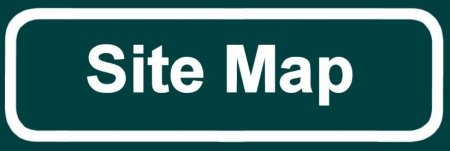*****************************************************************************************************************************************************************
MARCH 2021 UPDATE
*****************************************************************************************************************************************************************

GREG BROOKES
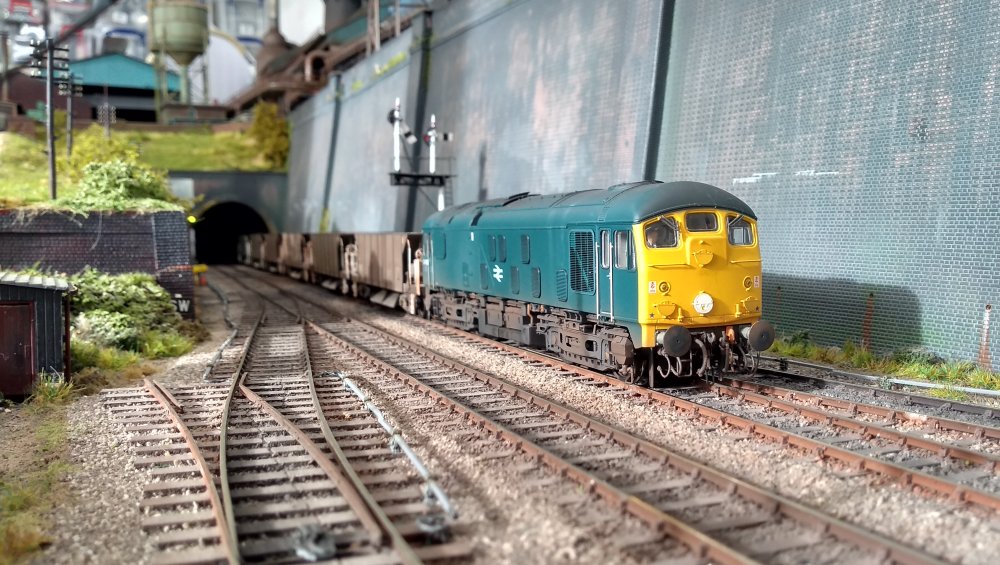
BR Derby type 2 number 24057 (SLW Class 24) emerges from the tunnel into the sunshine,
with a rake of Sealion bogie ballast hoppers.
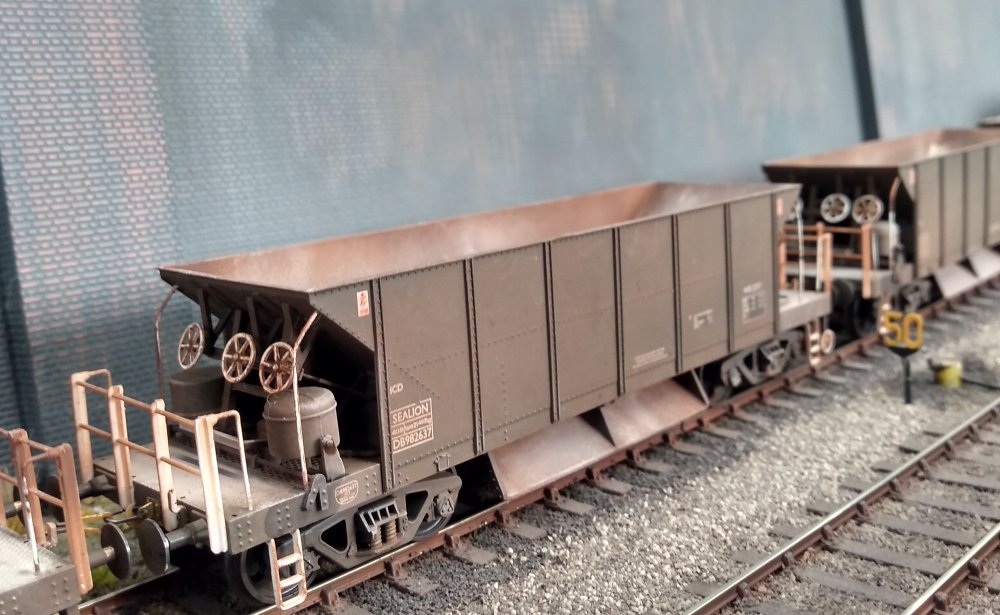
There's been an accumulation of acquired rolling stock during the last year that have been
converted to EM gauge in the Shenston Road workshops, and also have been detailed and fitted
with replacement couplings. I've set about weathering these Bachmann wagons during the
last few weeks using both brush and the spray gun, referencing photographs of the prototype.
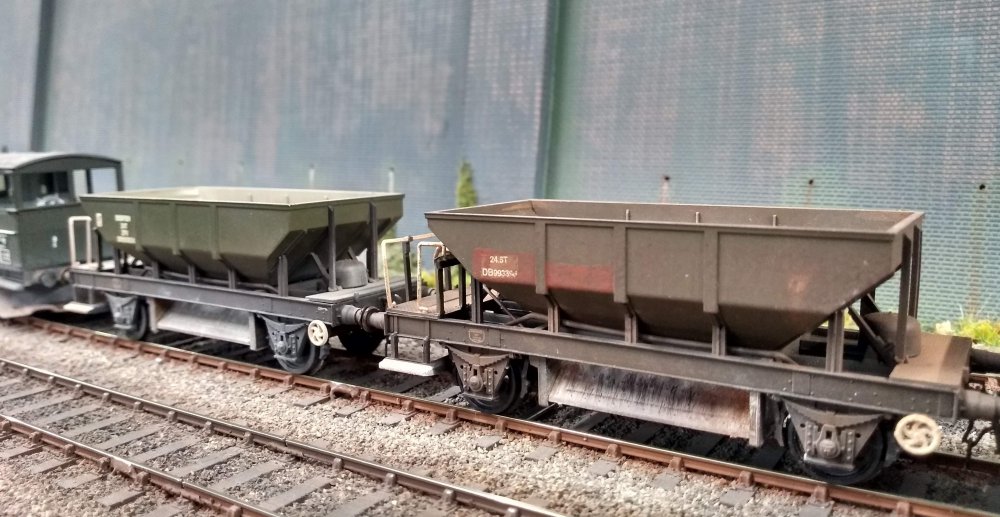
In addition to the Sealions, several Heljan Dogfish have also received some attention......
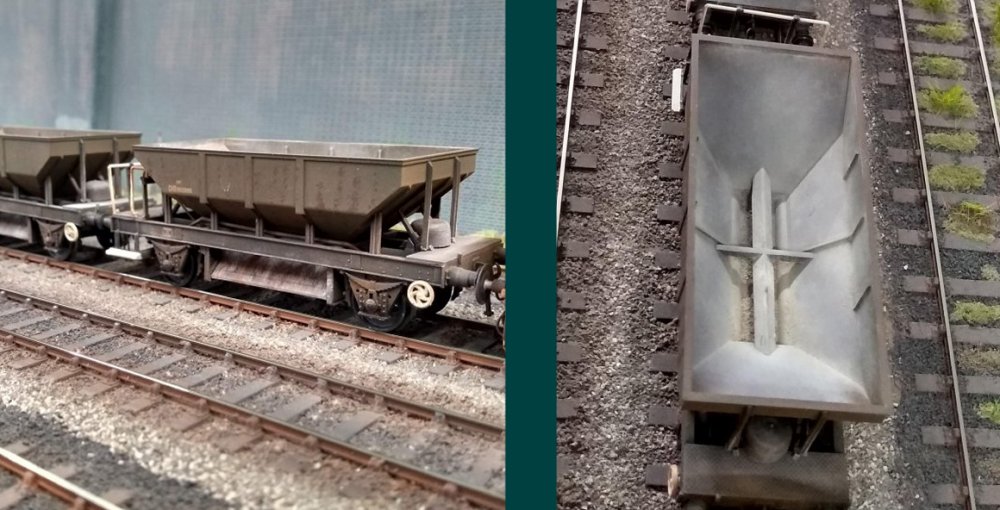
...... to include renumbering and detailing, as well as some weathering treatment whilst
having the paints out and being in the mood.
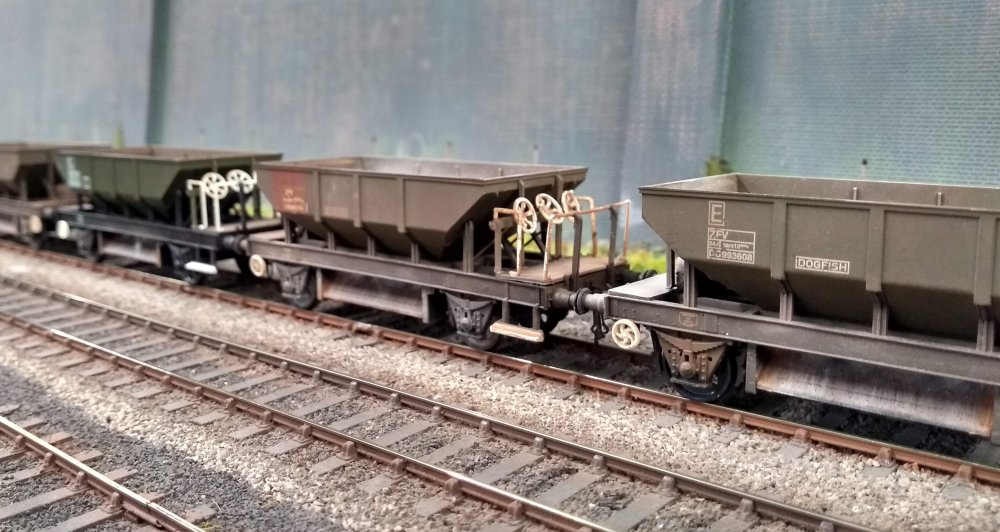
A rake of Heljan Dogfish, captured for the album.
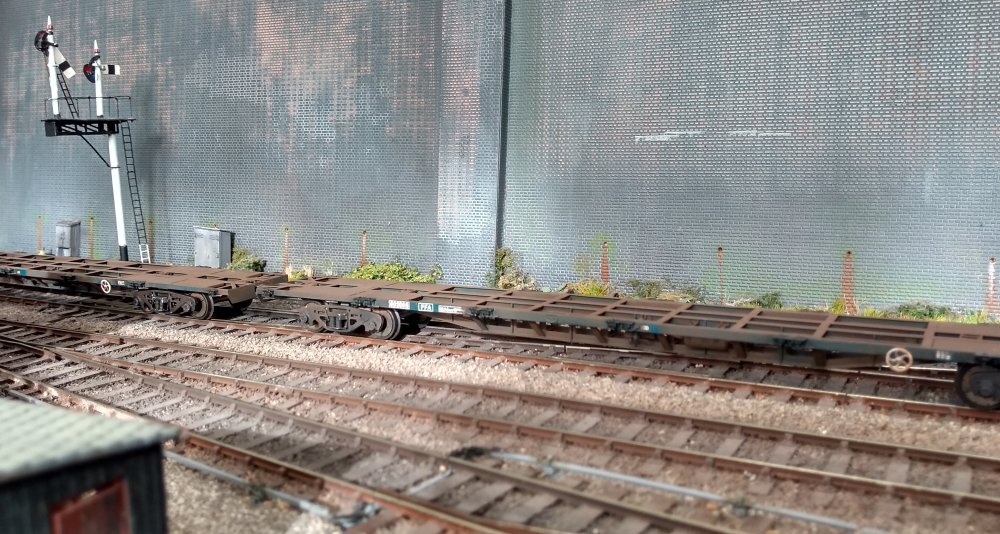
One thing leads to another, so it was time to get these Colin Craig freightliner flats out of
the drawer and finish them, highlighting the dirty area around the greased twistlocks, whilst
retaining the blue livery around the regularly cleaned number and data panels.
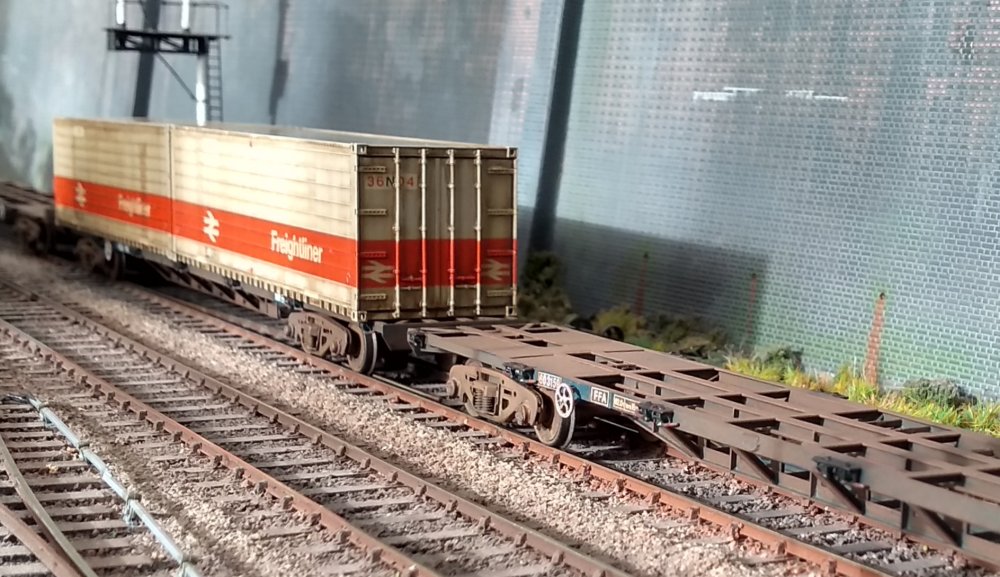
I've also got some Bachmann freightliner flats (which will be next on the list to do), so it
was a good opportunity to do some work on these 30ft containers and mount them on
the Colin Craig flats.
*****************************************************************************************************************************************************************

HYWEL THOMAS

The former LMS coal wagon that was converted to a coil was completed with new transfers drawn
up on the computer (along with a great deal of other future projects) and superbly printed by
Precision Labels. The Walthers coils have yet to have any further work done on them
- another looming project.

Next up on the wagon building front were six single bolsters to be another of BR’s many coil
conversions. Assuming these had always stayed in the north of Wales I had not been tempted
with them until recently. A discovery in some old records of a rake of six that had worked to
Newport Lliswerry with coils for a company in Aberdare gave me the excuse I needed. Here we
see several old Triang bodies undergoing the first modification.

The project was intended to use up a number of old kit chassis that had accumulated over the
years. The coil conversions were all based on the 10ft wheelbase examples on 16ft 6in chassis
so each had 2mm removed off the end of each solebar.
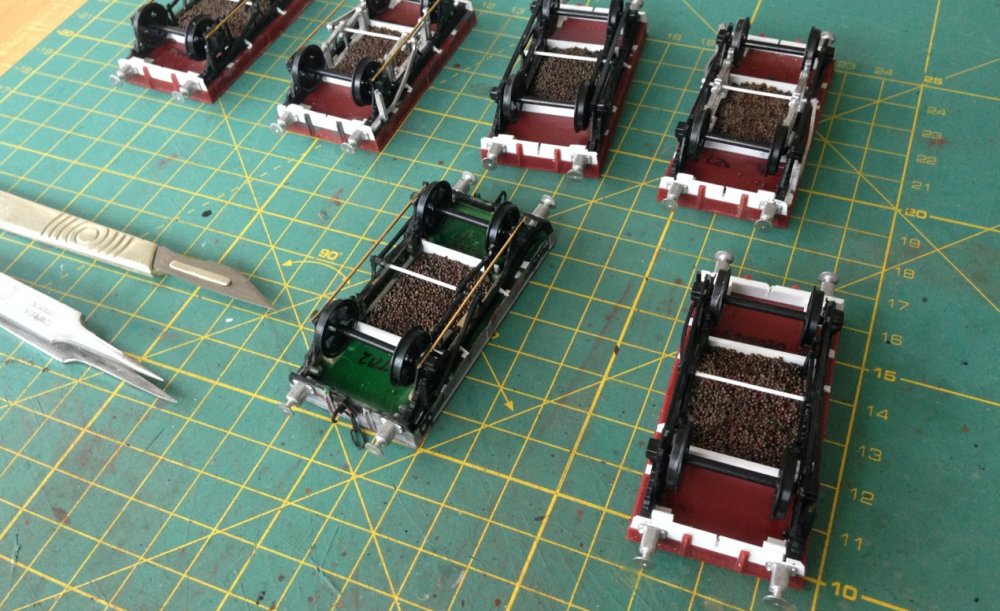
Here we see the six wagons with chassis completed and weight added. The distinctive
square-bodied buffers came from Lanarkshire Model Supplies.
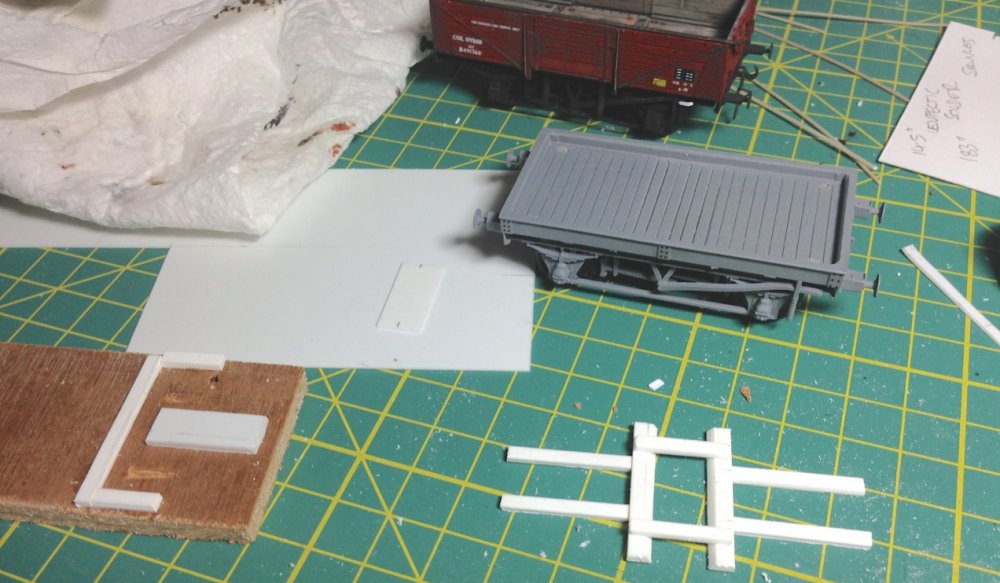
With the wagons primed the new deck can be seen with planks from Evergreen strip added where
the bolster once sat. The first of the coil cradles is under construction, again using
Evergreen strip. A former was created (on the left) to make sure all six came out the same.

And with the cradles built they were all painted and attached to the already painted wagons.
The transfers were, once again, off the newly created sheet and show the many variations that
this large fleet of over 300 wagons carried. The originals worked out of Shotton Works in North
Wales, hence the Hawarden branding.

As a change from the many recent wagon projects I decided to start work on the one corner of
the layout still to be developed. This will become a sand wharf and will be in need of a grab
crane to unload the dredgers. I had a Corgi Ruston Bucyrus 19-RB face shovel that had not been
used and so the shovel parts were removed and a new jib created from yet more Evergreen strip.
A complex piece of geometry!

Here we see the jib fitted to the crane but not yet rigged. The grab bucket (a 3D print from
Dexter’s Cove) was modified with a top frame and all awaits painting. Hopefully this will be
completed by next month.
*****************************************************************************************************************************************************************

PAUL JAMES

The last of the plaster work has been completed and the fascia painted black, which in
itself is quite a transformation of the scene. A start has also been made on the scenery, laying
and glueing some Jarvis hairy static grass mat (summer green & autumn mix), which can then be
treated to a mix of colours and textures in the form of bushes and shrubs.
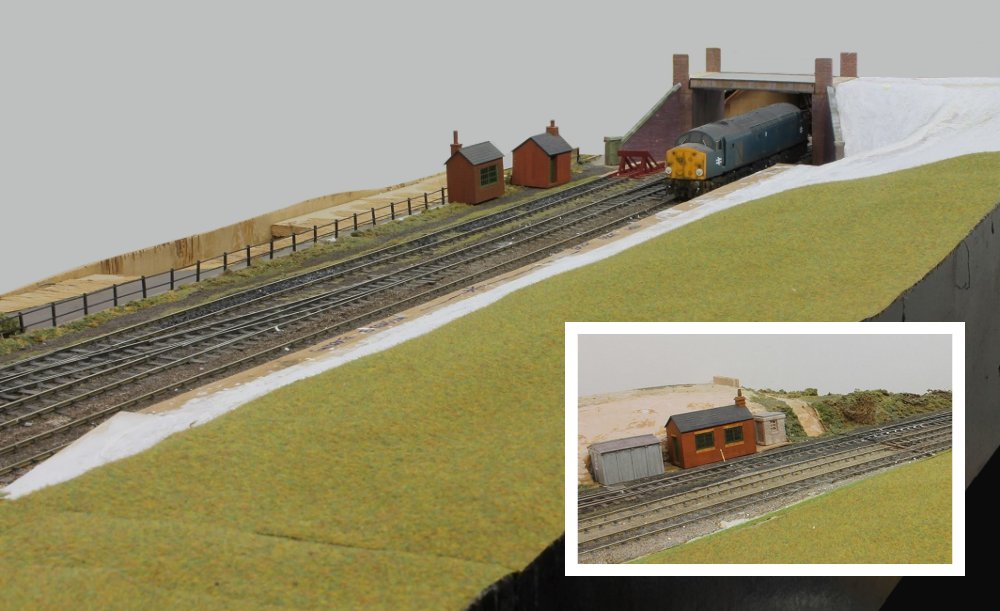
The road bridge and platform area is starting to take shape, with a selection of buildings and
lineside huts from various sources plonked down to get an idea of their eventual positions - not
that there are going to be many of them. The bridge is a Scalescenes plate girder bridge
downloadable printed card kit, although for a lot of it I've used balsa wood instead of card.
It has been designed on the layout to be replaced with a plasticard / Wills brick sheets if I
don't like how the card kit turns out.
*****************************************************************************************************************************************************************

STEVE CARTER
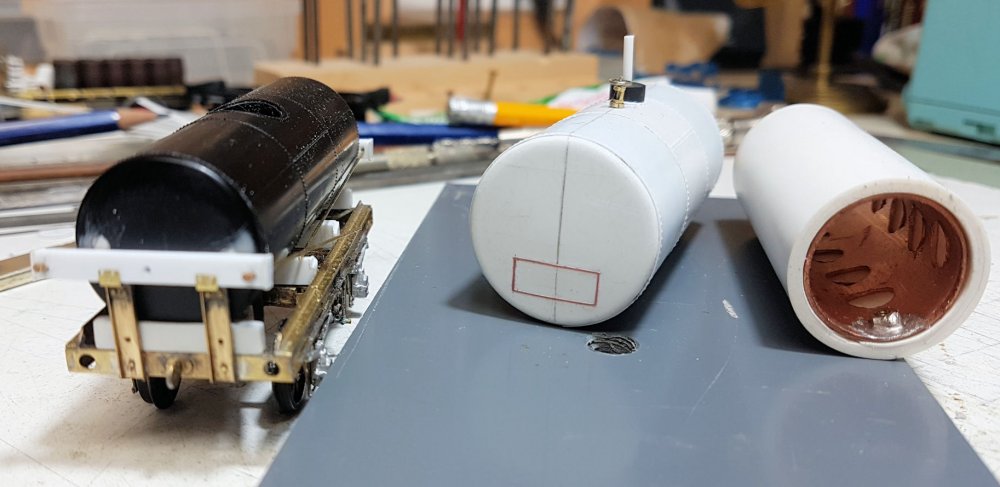
Sheppycroft Junction is scheduled to house a small fleet of Class B fuel tank wagons as
operated by Shell Mex / British Petroleum (SMBP) from Stanlow refinery. The fleet of five will
comprise of; two wagons based on the Oxford Rail 12T tank (one existing underframe converted
from saddle to cradle mount and one using a modified Rumney Models etched brass underframe),
one ex Air Ministry type with riveted tank / one Charles Roberts RCH 1927 welded barrel type
(both using Rumney chassis kits) and an anchor mount type with the relevant Rumney underframe.
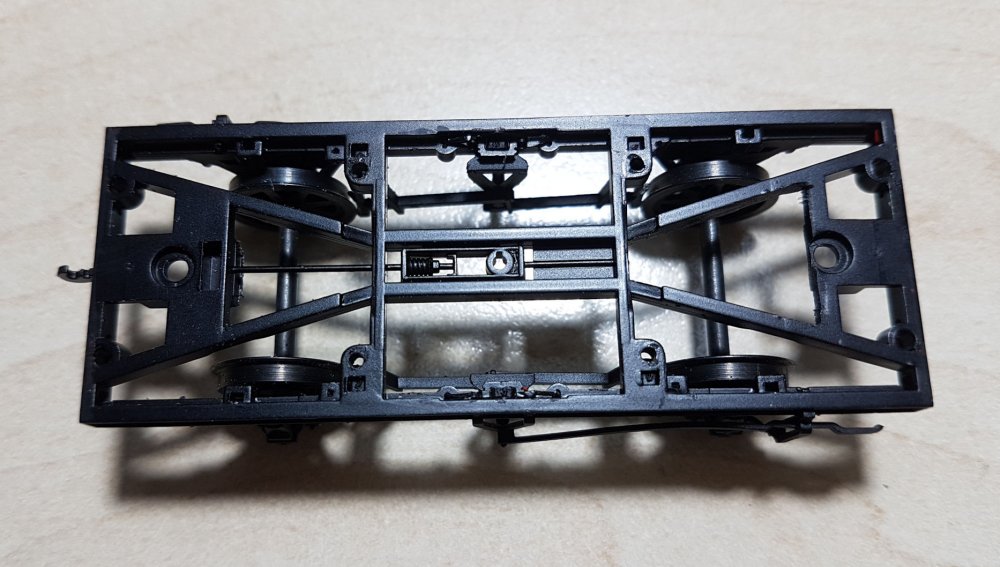
The Oxford Rail underframe awaiting change to a cradle mount rather than the saddle mount it
comes with. The wheelbase of 10' 6" makes it suitable for pre 1927 RCH steel framed types. As
is the Oxford Rail rendition is pretty good but lacks racking plates and the two vertical
stanchions for the cross head are similar handed 'L' section instead of 'T' section.
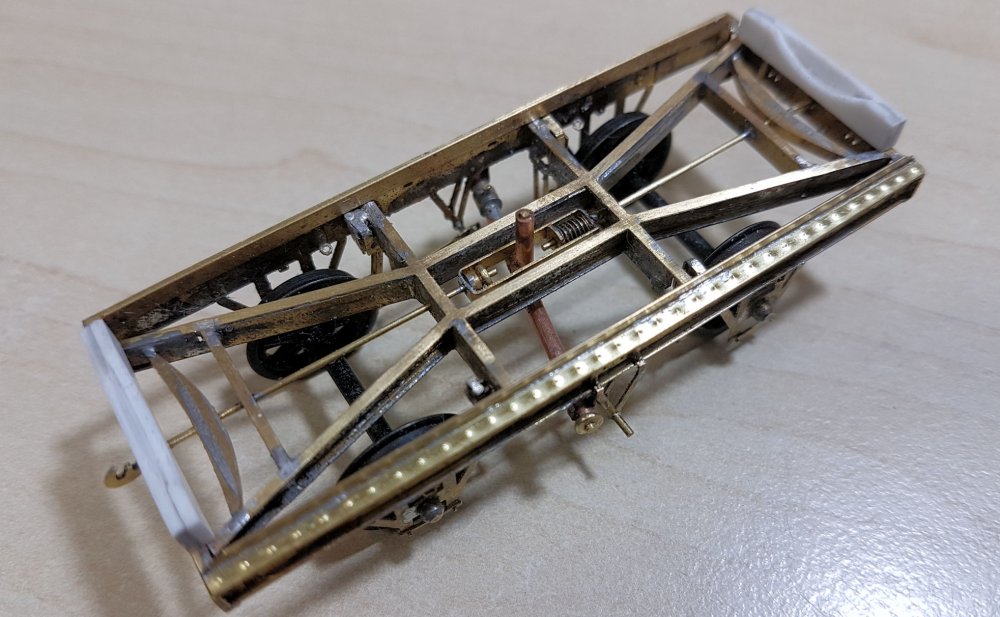
As supplied, a Rumney Models B.76 chassis caters for a 1927 RCH 9' wheelbase wagon but it has
now been altered to represent a very early Home Office design c1894. This required removal of
some of the frame members, access holes in the solebars and a representation of the buffer
springs along with draw gear and cradle.

Additional longitudinal 'L' sections running the full length of the sole bars have been added
as some early tank wagons were so equipped to prevent lateral movement of the saddles. The
Oxford Rail tank measures 22.5mm in diameter which equates to a prototype barrel measuring
5' 7 1/2" in diameter.

End on view showing new stanchions made from 3 x 2mm 'U' shaped brass section with a cross
head made using Evergreen 2.0 x 3.2mm strip with a 20 thou overlay bringing the width up to
2.5mm to represent the 8" x 10" component of the prototype.

The other three projected tank wagon builds require scratch built tanks, two of which are seen
here. On the left is a 7' 3" tank destined for use on the ex Air Ministry type whilst on the
right is a tank for the 6' 7 1/4" Charles Roberts 1937 build.

The ex Air Ministry barrel uses as its basis the Airfix 35T Tank Wagon barrel, slightly reduced
in diameter to accommodate 10 thou end and 15 thou central overlays which have impressed rivet
patterns. Prior to fixing the overlays, filler is applied to fill the indentations and is then
sanded back to a smooth finish to prevent the danger of the rivets 'imploding' when the overlays
are subjected to solvent.
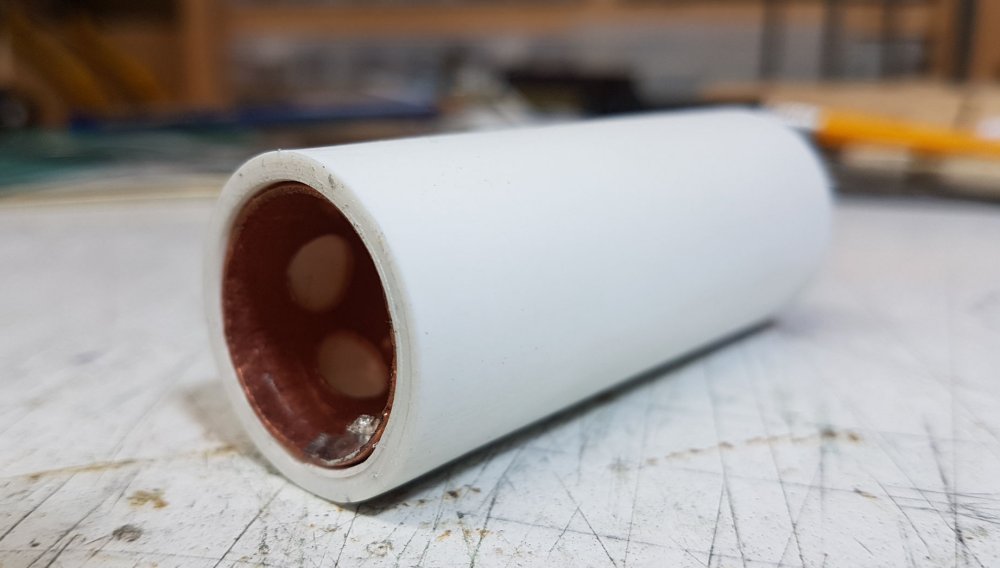
The Charles Roberts tank has been formed from a sheet of 20 thou plasticard wound tightly around
a 25mm former as in the manner prescribed by Geoff Kent in Volume 2 of his "The 4mm Wagon" series.
Using a 25mm former later allows the inclusion of a piece of similar diameter copper tubing to
provide weight and strength to the tank.

As a small diversionary project I tackled a Shire Scenes etched brass K6 phone box thinking it
wouldn't be too long to complete (more fool me!). The kit wasn't without issues as for some reason
they'd left very large gaps in the one piece folded box (which I filled with brass rod) and the
white metal roof wasn't a good advertisement for casting in general so a new roof was constructed
from brass. To top it off I've made an interior more suited for the early 1960s as that's the
preferred period I'm setting my layout in.
*****************************************************************************************************************************************************************

PETE JOHNSON

February brought the anniversary of my last being behind a layout at a show before the lockdowns
began. That was with Hornsey Broadway at Model Rail Scotland 2020 in the SECC Glasgow. To mark
the event a few photos of Canada Street locos of that city in the mid-1960s have been put together
from a recent photo session on the three exchange siding boards of the layout. To begin, kit-built
North British 0-4-0 ‘D2774’ is seen on the back road by the dock wall.
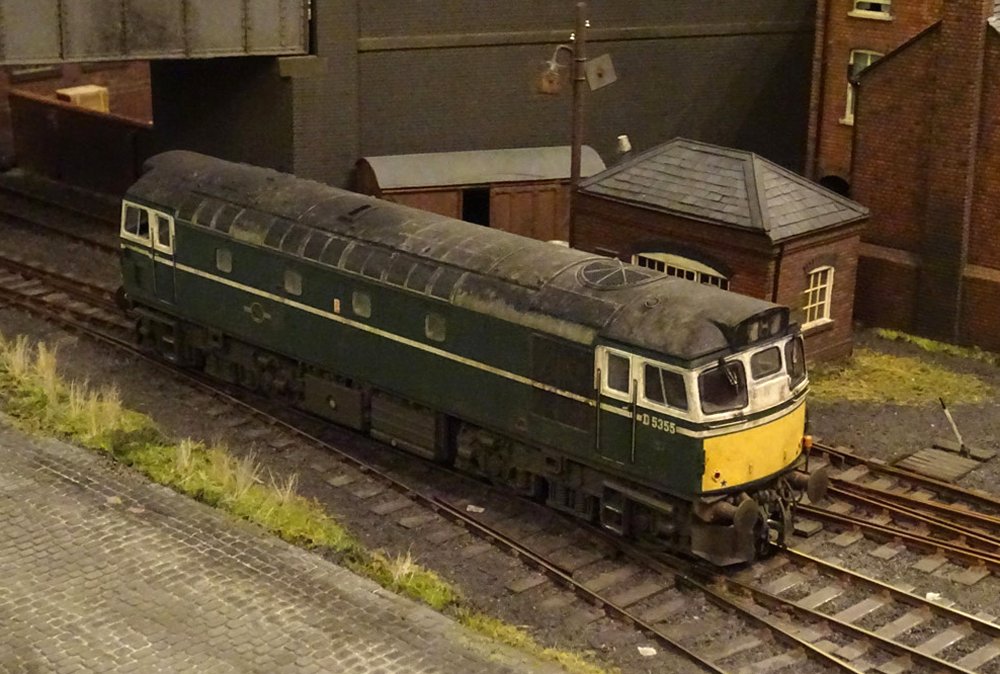
Heljan BRCW Type 2 ‘D5355’, later to become Class 27, runs light engine past the shunter stabling point.

North British sister loco ‘D2731’, also from the excellent Judith Edge kit, moves past the weighbridge hut.

D2731 continues into the back road, passing a loaded twin bolster wagon.

The loco is pictured buffered-up to a standard 16 ton mineral wagon. 1967 was to bring a mass
cull of these small Scottish locos and by March 1968 they had all left the BR fleet.

Clayton Class 17 ‘D8567’ was amongst the first to gain blue livery during June of 1967, but is
pictured a year or so later when a datapanel sticker has been added below the number on the
cabside. The model is the Techcad version, with the shell superbly cast in resin, before Heljan
made the type commonplace.

Back on the work bench a BD type BR container has been put together from some forgotten Parkside
pieces. The livery has been applied using the Modelmasters sheet. The container will make a
useful drop-in load for a Highfit wagon.

Continuing a Scottish theme, a pair of Dapol Class 29s are nearing completion. D6114 will suit
the mid-1960s, while 6129 is modelled as it appeared in the closing years of the type.

A chance to buy just the Dapol shells was taken to improve my old Hornby-based models of the
type. D6121 is a Class 21 for the early service in the North London area, whilst 6112 will
accompany 6129 into the beginning of the 1970s on the layout.
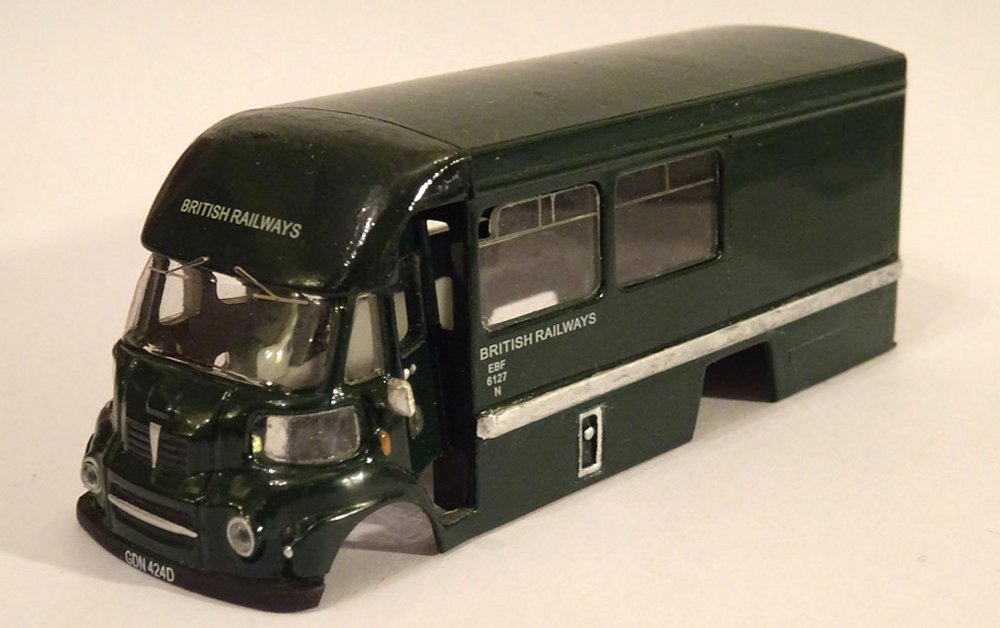
The external detailing of the earlier era Leyland Crewbus shell has recently been finished. Fresh
glazing all round, wipers and wing mirrors have been added to the Base Toys model. Interior detail
is still to add before it will allow mid to late-1960s era operation of the radio control model.
*****************************************************************************************************************************************************************

KIER HARDY
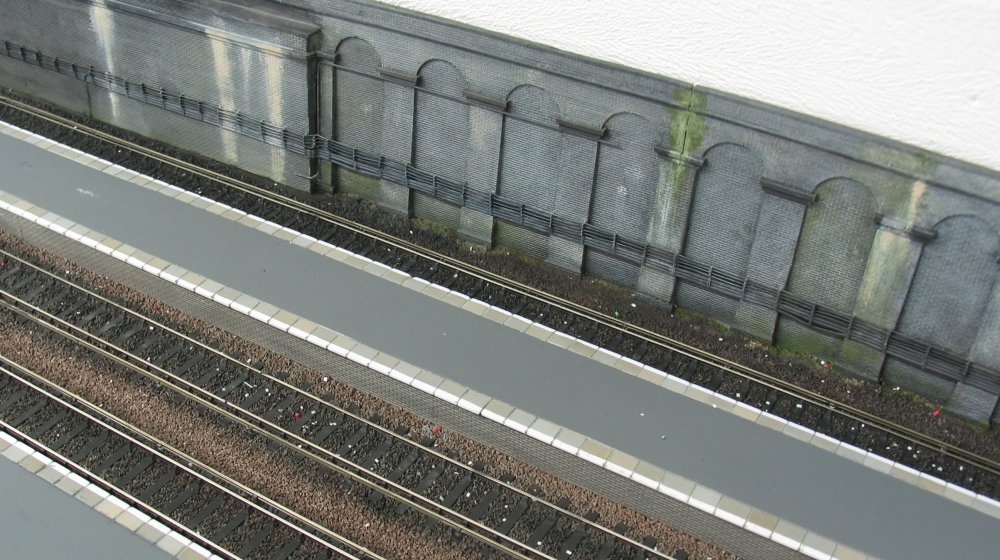
The 3rd rail has now been fitted and painted, and a scattering of litter awaits the dirty thinners
treatment. More dark washes are required under the bridge area, whilst the rest of the retaining
wall has been weathered in the places where foliage will be required to hide the cracks. The final
work on the retaining wall will be carried out when the upper wall is completed, so for the time
being it's important to have everything in the station area removable for easy access.
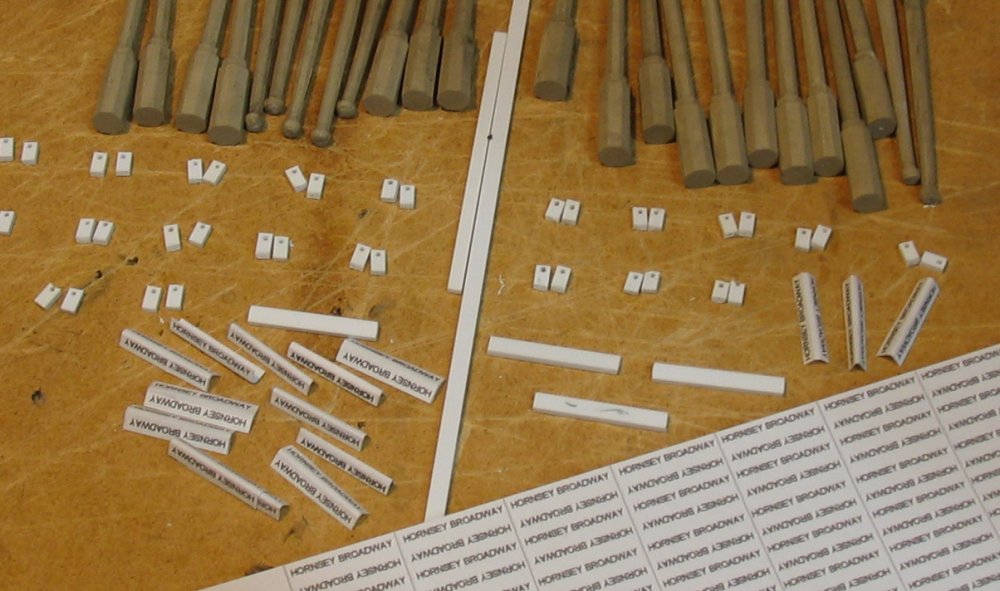
A start has been made on the distinctive platform lamps, of a style which were to be found at suburban
stations on the ex-GNR & GER routes, utilising Bachmann octagonal concrete posts with scratchbuilt
heads supported on a horizontal pole. The profiled hoods and side pieces are made up from Evergreen
section, seen here ready for assembly.
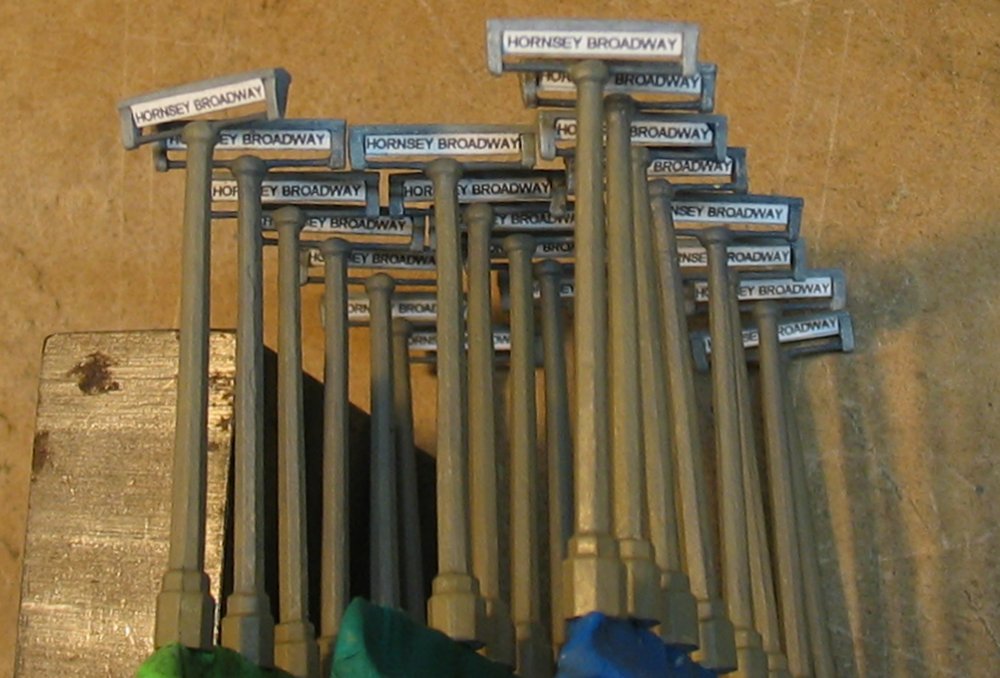
The 20 lamp posts are seen here built and painted, with the named diffusers fitted last, printed on
thin gauge white card and folded to shape. Each post base has been drilled and fitted with a Peco
track pin so they can be fitted and removed with ease during the remaining stages of the station development.

New running in boards have been constructed from styrene card and section, again using the same
method of fitting, so that their height and positions can be altered to suit other platform furniture.
The platform end warning signs have been kept from the previous arrangement, ready for reusing.
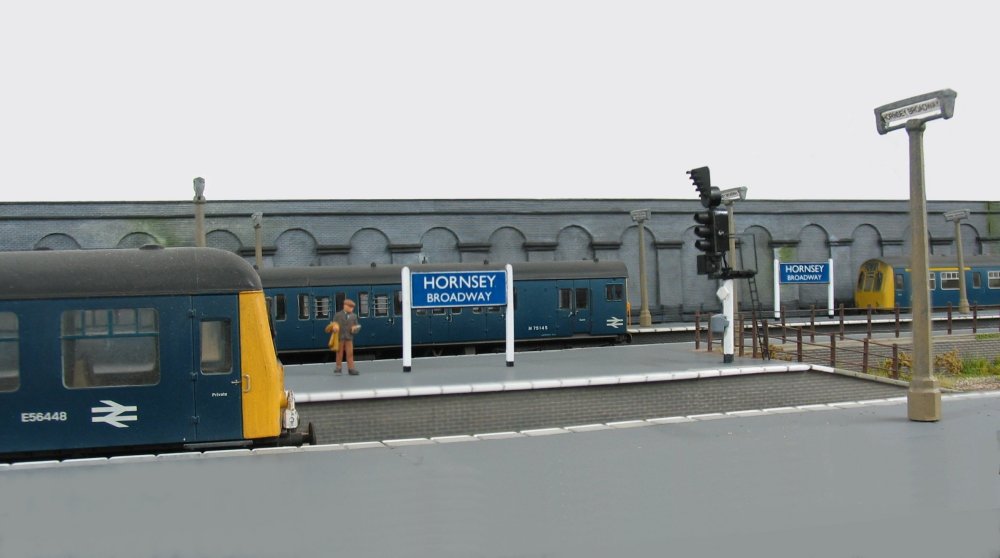
With the recently installed railings on Platform 3, as well as a new signal on the Up Kings Cross
route, the running in boards and platform lamps bring another dimension to the scene.
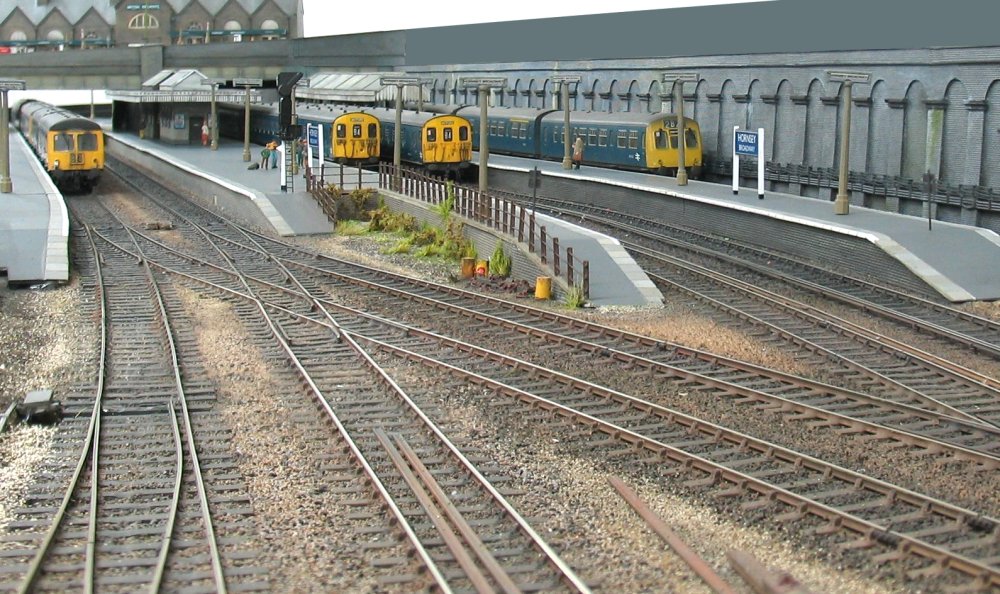
A busy moment at Hornsey Broadway with suburban services (left to right) in platform 5 to Welwyn
Garden City in the hands of a 6-car Cravens Class 105 DMU, platform 3 to Watford and platform 2 to
Broad Street by Class 501 EMUs, and in platform 1 is a Stratford allocated Class 111 on a service to Upminster.

Since the last update, I've produced another couple of videos which
feature a virtual railway room tour, and a trip up the branch line
to see the comings and goings at the motive power depot.
Please click on the above image to view.
*****************************************************************************************************************************************************************







